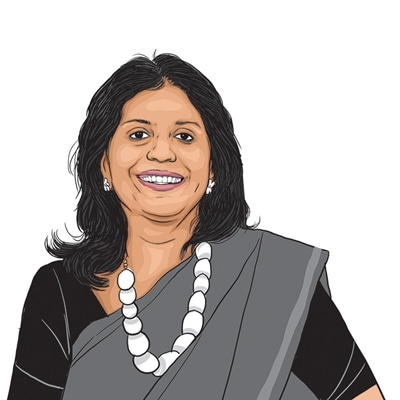Opinion With right policy choices, AI can become a driver for inclusive growth
The policy challenge is not merely enabling AI access but also ensuring that AI ecosystems remain contestable and worker-supportive
 India’s digital public infrastructure model should be anchored in shared infrastructure, open standards, and interoperability to make sure that innovators are not locked out.
India’s digital public infrastructure model should be anchored in shared infrastructure, open standards, and interoperability to make sure that innovators are not locked out. Also by Nikita Jain and Shailly Gupta
Behind the headlines of layoffs, attributed partly to the deployment of artificial intelligence (AI), there is a more fundamental question: How will India shape the trajectory of AI in ways that its impact on jobs, productivity, and economy is inclusive?
Estimates from the ServiceNow–Pearson AI Skills Research 2025 report indicate that agentic AI could reshape over 10.35 million jobs and create 3 million new tech roles in India by 2030, placing the country ahead of Singapore and Australia in AI transformation. A 2025 ILO study highlights that, as new tasks emerge in AI deployment, jobs are likely to evolve rather than disappear. This optimism must be tempered with a clear-eyed view of India’s structural challenges. The farm sector, which employs the most people in India, has limited exposure to AI. Labour-intensive sectors, especially services, which contributed 55 per cent to GDP and 31 per cent to employment in FY24, could, however, be impacted. Compounding this is the slow pace of skilling and low adoption of evolving competencies, especially among informal workers. How these structural gaps interact with AI adoption in India will determine whether technology exacerbates existing employment gaps or helps close them.
Economist and Nobel Laureate Daron Acemoglu has argued that AI’s impact is not destiny but a choice. The central dilemma lies between two distinct AI pathways — automation and augmentation. Automation entails using AI to replace human workers, boosting efficiency but risking job losses. Augmentation involves using AI to complement human effort, enhancing productivity while preserving or expanding employment. India must avoid the automation trap and prioritise three interlinked pillars — skilling workers, reducing inequality through inclusive, non-extractive infrastructure, and fostering entrepreneurship through support for innovation.
These shifts are underway in some sectors. Tata Steel uses AI co-pilots to support engineers rather than displacing workers. Infosys has launched large-scale reskilling efforts. Siemens is deploying generative AI to enhance productivity and worker well-being. These examples point to a path where AI acts as a charioteer (saarthi) and not a destroyer (vinashak).
To scale such models, a focus on lifelong learning is essential. Digital and AI-related competencies should be embedded across schools, universities, industrial training institutes, and vocational centres. Strengthening academia-industry-government partnerships is equally vital. Flagship programmes such as the Atal Innovation Mission, Startup India, Future Skills PRIME, Youth for Unnati, and Vikas with AI must be scaled up.
Emerging evidence shows that generative AI tools can help narrow skill gaps, particularly for workers with low skills, by serving as collaborative tools. With AI transforming both low- and high-skill jobs, success increasingly hinges on developing the cognitive and social-emotional skills that machines cannot replicate.
To realise AI’s augmenting potential, India must ensure markets remain open and competitive. As highlighted in the ICRIER AI Markets and Competition report, the growing dominance of vertically integrated firms risks replicating platform-era distortions. Infrastructure lock-in, bundling of services, self-preferencing and proprietary standards could restrict smaller players from participating in the AI economy. If unchecked, these structures will place critical decisions about AI deployment in the hands of a few firms. Employers, driven by cost efficiencies, may default to automation-first approaches. AI infrastructure providers, be they foundational models, storage, or computing, may shape AI’s trajectory.
The policy challenge, therefore, is not merely enabling AI access but also ensuring that AI ecosystems remain contestable and worker-supportive. This will require competitive access to cloud and edge computing, open APIs, and interoperable systems, and supporting indigenous development of Small Language Models, domain-optimised AI models or domain-specific agents, and vernacular tools to democratise AI innovation.
Computing, storage, and access to datasets should be treated as public goods. India’s digital public infrastructure model should be anchored in shared infrastructure, open standards, and interoperability to make sure that innovators are not locked out. Public investment in incubators, accelerators, and mentorship should not be limited to scaling a few unicorns but to building an ecosystem of sustainable enterprises. When empowered with the right digital tools, computing access, and tailored skilling, MSMEs can become powerful engines of employment-rich growth.
AI may displace some jobs. But with the right policy choices, institutional support, and infrastructure, it can become a driver for inclusive growth.
The writers are at the ICRIER Prosus Centre (IPCIDE)





